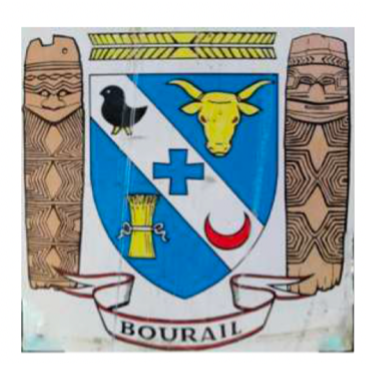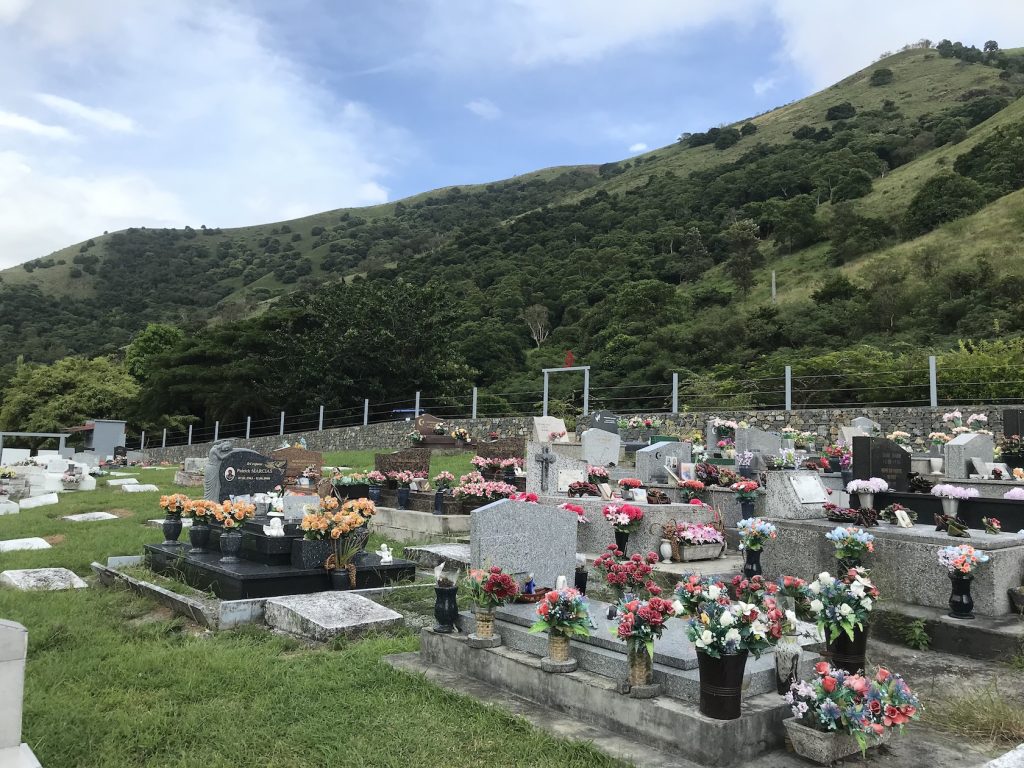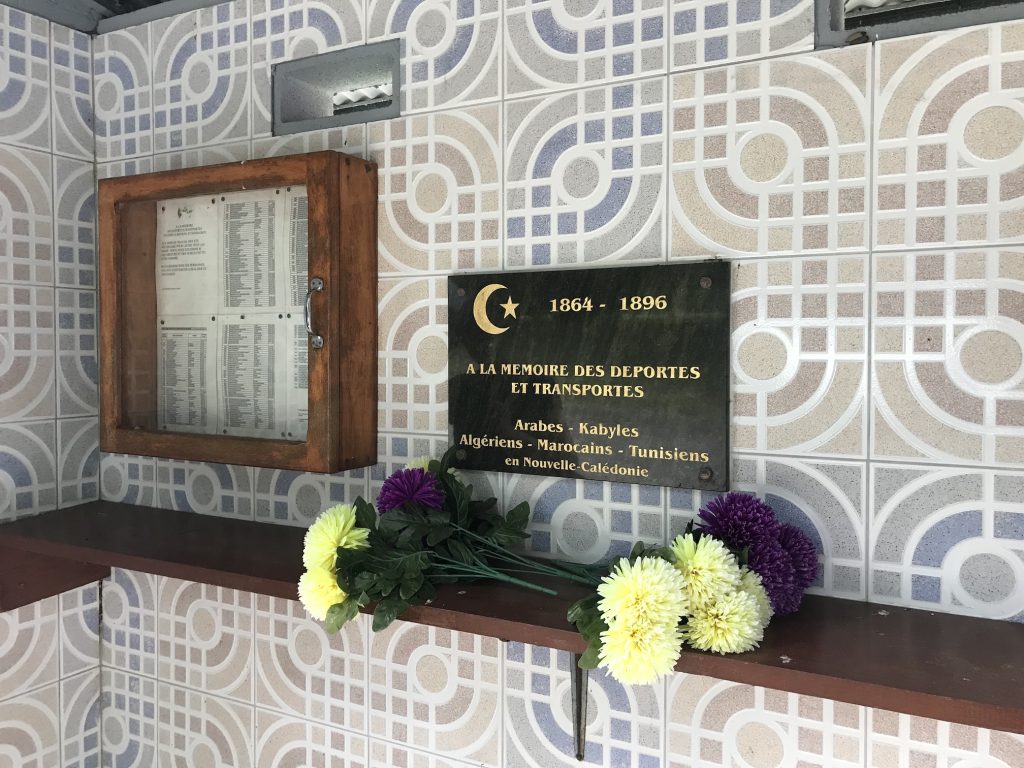In a previous blog, An Algerian Prisoner in New Caledonia, we began the story of Abdelkader ben Cherfia. A blacksmith from Blida, Abdelkader met an untimely death as a murder victim at the hands of his wife, Peroline Langevin, in 1901. His death notwithstanding, Abdelkader ben Cherfia’s life story reflected the agricultural success many Algerian prisoners found in the Bourail area of New Caledonia. Like him, many of them became holders of concessionary land and settled down with female ex-prisoners or indentured workers. Some of Abdelkader’s descendants stayed in the area and married amongst the other families of Bourail. Intermarriage between people from different parts of the French Empire was not uncommon and his family reflects these intra-colonial ties. For example, a member of the Abdelkader family married into the family of a Vietnamese prisoner from French Indochina by the name of Mai Van Y. Mai Van Y had been a market seller near the town of Mỹ Tho in the Mekong Delta, in the area that later became southern Vietnam.
Sentenced to 20 years for theft and murder in 1890, twenty-eight-year-old Mai Van Y was sent to New Caledonia in 1891 on the ship Chéribon along with a large shipment of Vietnamese prisoners, 750 in total. This was the largest shipment of prisoners ever sent from French Indochina to any penal location in the French empire. He arrived in New Caledonia on 14 March 1891 and initially worked for a M. Humbert in Nouméa on a five-year contract. Mai Van Y also left a wife and one child behind in the Mekong Delta: in this case not even the name of his wife is known. Unlike earlier Vietnamese prisoners whose fate was more akin to that of Abdelkader ben Cherfia, there was no concessionary land eventually waiting for Mai Van Y. Instead, like his Vietnamese compatriots he was hired as an indentured worker to a business in Nouméa until completing his sentence in 1910. One of Mai’s children, Celestin Clement Mai Van Y, married the granddaughter of Abdelkader Ben Cherfia, Augustine, in 1952.
Augustine was born in Farino, New Caledonia but died in Sydney, Australia after Celestin’s premature death at the age of 43. Such journeys into the Anglophone world were not unusual for prisoner descendants from New Caledonia. Two of Augustine’s sisters married American servicemen based in the Pacific during World War II and ended up living in Wenatchee, a small fruit-picking town in Washington state in the USA. Such histories would have been much more unusual for prisoners from French Guiana.
In New Caledonia itself, today there are several hundred descendants of Abdelkader Ben Cherfia spread out over a large geographical area, with many branches of the family. Many years later, one of Abdelkader’s descendants related that, on his deathbed, Abdelkader’s brother had confessed to having been the recipient of the stolen goods rather than his younger brother.[1] However, Abdelkader Ben Cherfia had undergone the sentence in his sibling’s place. This can’t be proven either way but lives on in the oral histories related between the Abdelkader descendants. One aim of our project is to connect with citizen-scholars on the frontlines of genealogical research. It is through their work, that so much more of Abdelkader ben Cherfia’s life has been discovered and documented, involving many of the elements which run through our project. A convict marriage, a new life in a panel colony, global descendants, and descendant genealogists whose research dedication predates the internet and many of the avenues of research available to us today.
Indeed, as part of our wider project on the descendants of non-European prisoners in the French empire, we will also be exploring descendant experiences of the Algerian prisoners sent to French Guiana. Despite the diversity of our case studies, many threads interweave throughout these disparate sites.
In New Caledonia, the cemetery, cultural centre, and mosque of Nessadiou testify to the arrival of those prisoners from the Maghreb deported between 1864 and 1897. The cemetery is located on the road that leads to Bourail, near the Nessadiou River, with the crescent moon at the entrance in the colours of the Algerian flag. Indeed, this same crescent moon is also found in the coat of arms of the commune of Bourail itself.

Figure 1. Coat of Arms of Bourail with the crescent moon

Figure 2: The Nessadiou Muslim cemetery
For many, this is the focal point of this community. For others it is by entering into the towns of Bourail itself that the origins of the inhabitants are most apparent. Maybe not Blida, an Algerian city of roses, but nevertheless a place where traces of those Algerian prisoners are still very much alive.

Figure 3: Memorial to the Prisoners in the Nessadiou Cemetery
Lorraine M. Paterson
Further Reading/Viewing
Caledoun: Historie des “Arabes” de Nouvelle-Calédonie Insitut du Monde Arabe, Paris 2011.
Louis-José Barbançon and Christophe Sand, Caledoun: histoire des Arabes et Berbères de Nouvelle-Calédonie (Bourail: Association des Arabes et Amis de Nouvelle-Calédonie, 2013.
Simone Devaud, “Abdelkader: Un Patronyme sans Visage et une lignée immense.” In (Le) Bagne en Héritage: Destins de familles issues de la colonisation pénale: eds, Bérengère Bourgeot, Gilles Caprais, and Evelyne Henriot. Noumea: Édition Les Nouvelles Calédoniennes, 2020.
Mélica Ouennoughi, Les déportés maghrébins en Nouvelle-Calédonie et la culture du palmier dattier: (1864 à nos jours) (Paris: L’Harmattan, 2005).
This documentary is also well-worth watching: https://www.aljazeera.com/program/al-jazeera-world/2015/9/14/exile-in-new-caledonia
[1] As related in the Al Jazeera documentary, “Exile in New Caledonia.”